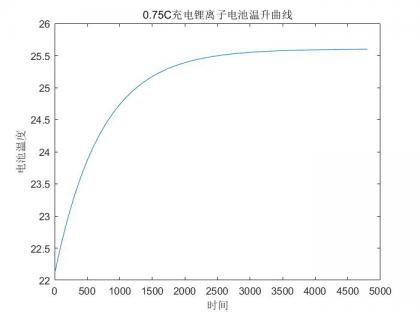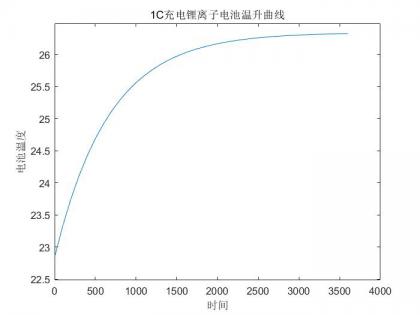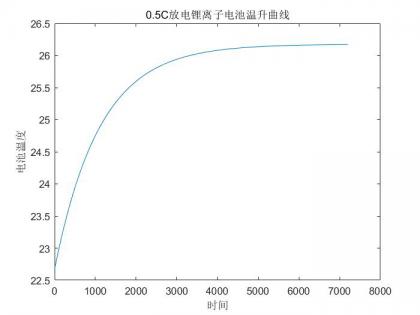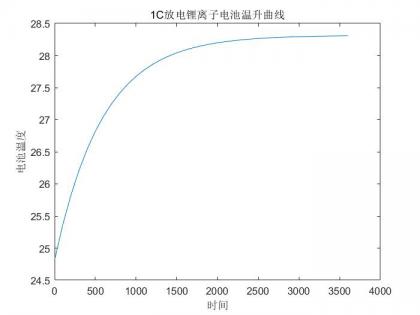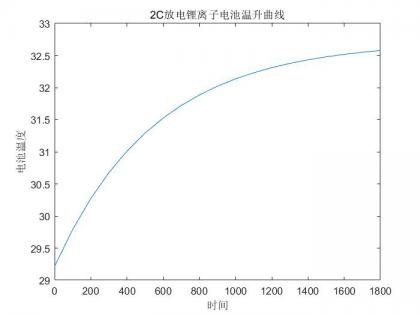锂离子电池热模型研究及仿真毕业论文
2021-12-05 17:35:47
论文总字数:23661字
摘 要
随着时代的发展,人们越来越意识到能源危机和环境污染问题的危害性,新能源汽车也取得了较为出色的发展,并且能够逐步实现对传统燃油汽车的取代,在人们的生活中发挥了越来越突出的作用和意义。对于新兴电动汽车市场的构建来说,其在新能源汽车领域中占据了超过了半数的比例,锂离子动力电池作为电动汽车动力的一大重要来源,在电动汽车产业中有着不可替代的地位。温度在锂离子电池工作对锂离子电池的工作性能有着十分突出的影响,若是有较高的电池温度,电池的安全性受到威胁,电池的使用寿命受到损害,甚至造成热失控;电池温度过低时,电池的容量较正常工作情况下会大幅度下降,影响电池持续工作的能力。当电池的温度不在安全温度范畴情况下,需要合理引入电池热管理技术的应用,从而确保电池温度能够始终被控制在合理范畴,使电池长时间处于适宜的工作温度范围内,延长电池的使用寿命。这样既能使电池的工作效率保持在一个较高的水平,也能保障电池的安全性。
本文先介绍锂离子电池热模型的研究背景及研究意义,然后对国内外学者对锂离子电池热模型研究的情况进行了阐释。在进行观点分析上,就目前锂例子电池基本结构、相应的工作原理以及过程中的优劣势进行了综合解读和阐释,分析了锂离子电池在设计上,其结构的突出特点以及工作实现方式。同时阐释了其优缺点。在观点探讨上,还分析了锂电池生热以及传热原理,从而立足发展视角,完成相应的建模操作。在分析上,针对单体锂离子电池的探讨,本文则是以电池整体为对象和以微元体为对象两个角度进行了锂离子电池热模型的建模。且以微元体为对象建模,在前人的基础上,建立了二维模型和一维降阶热模型。用MATLAB软件进行了仿真,验证了以电池整体为对象建立的锂离子电池热模型的正确性。
关键词:锂离子电池;热模型;电动汽车;电池热管理
Abstract
With the development of the times, people are more and more aware of the harmfulness of energy crisis and environmental pollution. New energy vehicles have also made a better development, and can gradually realize the replacement of traditional fuel vehicles, playing an increasingly prominent role and significance in people's lives. For the construction of emerging electric vehicle market, it accounts for more than half of the proportion in the field of new energy vehicles. As an important source of electric vehicle power, lithium-ion power battery plays an irreplaceable role in the electric vehicle industry. The working temperature of lithium-ion battery has a very prominent impact on the working performance of lithium-ion battery. If there is a higher battery temperature, the safety of the battery is threatened, and the service life of the battery is damaged, even causing thermal runaway; when the battery temperature is too low, the capacity of the battery will be greatly reduced compared with the normal working condition, which will affect the continuous working ability of the battery. When the temperature of the battery is not within the safe temperature range, it is necessary to introduce the application of the battery thermal management technology reasonably, so as to ensure that the battery temperature can always be controlled within the reasonable range, so as to make the battery in the appropriate working temperature range for a long time and extend the service life of the battery. This can not only keep the working efficiency of the battery at a higher level, but also ensure the safety of the battery.
This paper introduces the research background and significance of the thermal model of lithium-ion battery, and then explains the research situation of domestic and foreign scholars on the thermal model of lithium-ion battery. In terms of viewpoint analysis, the basic structure, corresponding working principle and advantages and disadvantages in the process of lithium-ion battery are comprehensively interpreted and explained, and the outstanding characteristics of the structure and the way of working realization of lithium-ion battery in the design are analyzed. At the same time, its advantages and disadvantages are explained. In terms of viewpoint discussion, the principle of heat generation and heat transfer of lithium battery is also analyzed, so as to complete the corresponding modeling operation based on the development perspective. In the analysis, aiming at the discussion of single lithium-ion battery, this paper takes the whole battery as the object and the micro cell as the object to build the thermal model of lithium-ion battery. On the basis of predecessors, two-dimensional model and one-dimensional reduced order thermal model are established. The correctness of the thermal model of lithium-ion battery is verified by the simulation of MATLAB software.
Key Words:lithium-ion battery;thermal model;electric vehicle ; battery thermal management
目录
第1章 绪论 1
1.1 研究背景 1
1.2 研究意义 3
1.3 论文主要研究内容 4
第2章 锂离子电池及锂离子电池热模型研究进展 5
2.1 锂离子电池结构与工作原理 5
2.1.1 锂离子电池的结构 5
2.1.2锂离子电池的工作原理 6
2.2锂离子电池模型分类 8
2.2.1 电化学热耦合模型 8
2.2.1.1 集中质量模型 8
2.2.1.2 一维模型 8
2.2.1.3 二维模型 8
2.2.1.4 三维模型 8
2.2.2 电热耦合模型 9
2.2.3 热滥用模型 9
2.3 锂离子电池热模型研究进展 9
2.3.1 国内研究进展 9
2.3.2 国外研究进展 11
第3章 锂离子电池热模型的建立与仿真 14
3.1 锂离子电池热模型建立 14
3.1.1 以电池整体为对象建立电池热模型 14
3.1.2 以微元体为对象建立电池热模型 15
3.1.2.1 二维模型 16
3.1.2.1 一维降阶模型 17
3.2 锂离子电池热模型的选择及验证 17
3.2.1 热模型的数学表达式求解 17
3.2.2 MATLAB仿真程序及结果 18
3.2.2.1 0.5C充电 19
3.2.2.2 0.75C充电 20
3.2.2.3 1C充电 21
3.2.2.4 0.5C放电 22
3.2.2.5 1C放电 23
3.2.2.6 2C放电 24
3.3 仿真结果分析 25
第4章 总结与未来展望 26
参考文献 27
致 谢 30
第1章 绪论
1.1 研究背景
在能源与资源的大量消耗造就了现代工业文明的辉煌的同时,化石能源短缺与环境污染问题愈发严重也不可避免的出现在人们面前。解决能源与环境危机的一大重要途径便是不断促进新能源电动汽车的发展,新能源汽车产业在全球各个国家也备受关注。随着新能源汽车的发展,其未来必将实现对传统燃油车的取代。在过程中,我国也十分关注新能源汽车的发展。为此我国将新能源汽车列为一项战略产业。在过程中,国家也加大了对新能源汽车的扶持力度,同时在不少政策中进行了相应政策以及规划的制定。具体包括《节能与新能源汽车产业发展规划(2012-2020年)》、《中国制造2025》以及其他政府工作报告等内容。结合销售现状来说,我国从2008-2019年,汽车生产销售总体数量总体呈上升态势,近两年有小幅度的下降。在这十二年的时间里,我国汽车产销总量提升了两倍左右,如图1.1为我国汽车2008年到2019年间的汽车产销统计图[1]。
图1.1 2008年-2019年我国汽车产销统计图
请支付后下载全文,论文总字数:23661字
相关图片展示:
